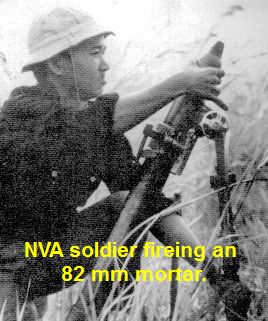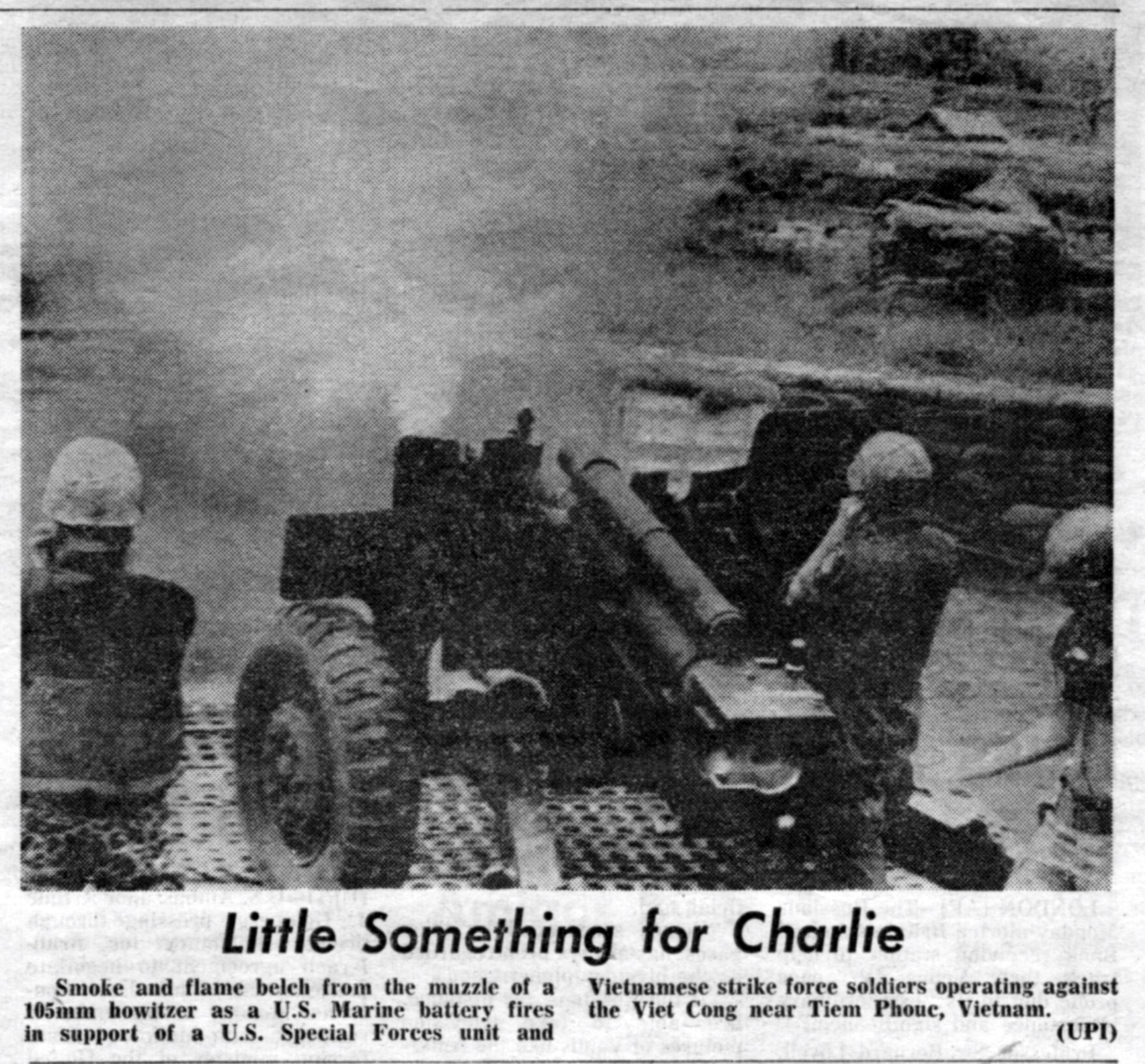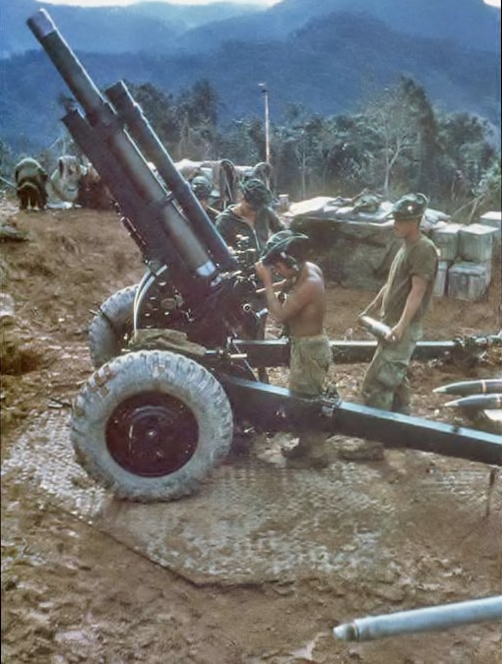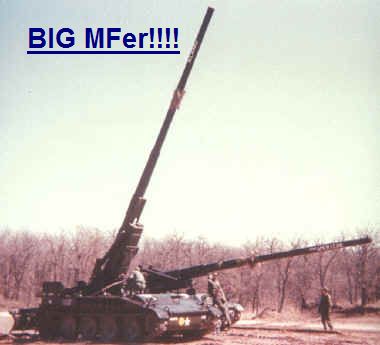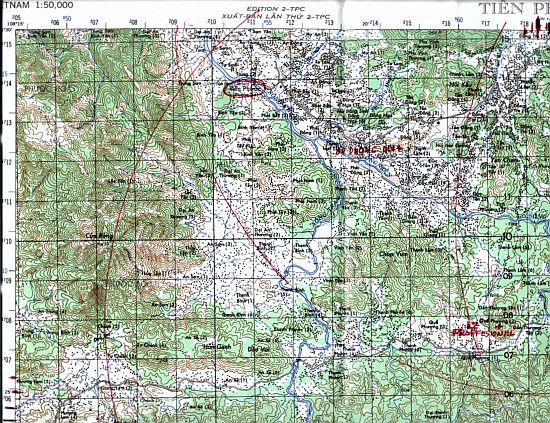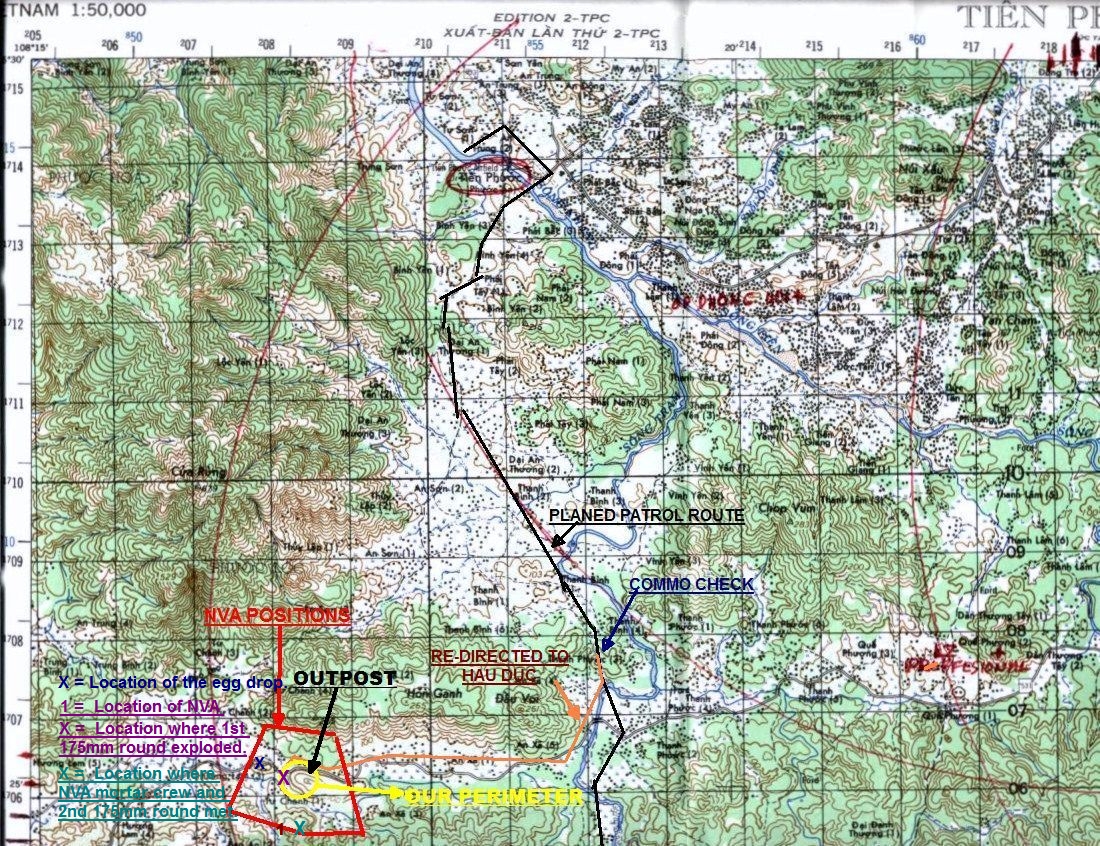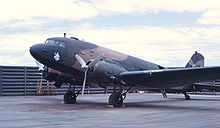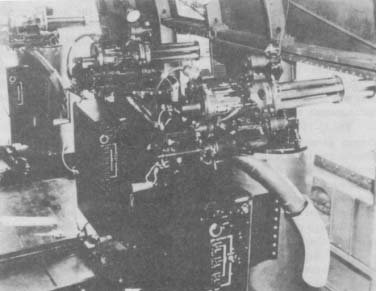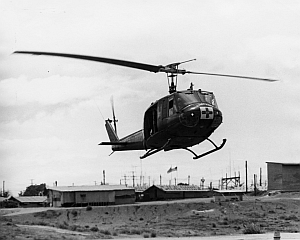| Date: 03 January, 1968 The team ("A" Team [A-102]), had received intelligence about a large weapons cache stashed almost due South of use. Senior medic, SFC Wilburn and I were assigned the mission to find the cache and recover or destroy it. We took out about 100 CIDG (Civilian Irregular Defense Group) and two LLDB (Luc-Luong Dac-Biet - Vietnamese Special Forces) NCOs. We didn't have a major VC force in out area and usually stayed on the trails. The CIDG had a unique take on noise discipline. Where, normally, one would try to be as quiet as possible, the CIDG banged canteens, weapons and/or anything else. This scared the heck out of me when I was a newbe and I never quite got use to it. Then I learned that there was an implicit deal between our guys and the local VC. We'd make a lot of noise so that they could hear us coming and instead of setting up an ambush as would be proper military procedure, they'd quietly slip into the bush. Our guys didn't get hurt - their guys didn't get hurt. So we were about a half's day out when we made a radio contact with the A-Team. The big news was that they had lost radio contact with our sister safe-area, Hau Duc. We were ordered to divert from our mission and move west into the mountains to see what was up in Hau Duc. We made it into the valley without the slightest problem. We set up out CIDG in a defensive perimeter and headed up the highest hill which was the command post. Hau Duc did not have CIDG for security. They had RF/PF, "Ruff Puffs" (Regional Force/Provincial Force). They were very similar to the CIDG but were advised by ARVN (pronounced "arvin") (Army of the Republic of Vietnam) soldiers. The minute we got to the top of the "hill" (no easy climb) we knew we were in trouble - big trouble! We started getting mortared! The VC did not mortal during daylight hours. And it was coming in from several different directions. And we could see movement - lots of movement - in the grassy areas on the mountain sides around us. Something big and mean had let us walk unhindered into the valley, but it didn't look like they were to intent on letting us out again. We, of course, immediately got on the radio to the A-Camp. Too bad. We were out of range of the Marine 105's (105 mm howitzers). The nearest useful artillery was one 175mm howitzer on the coast at Chu Lai. Its range was 17 miles and we were right on the edge of it. The next problem was that we had never been there before and were therefore unfamiliar with the terrain. Our topographical maps were not drawn from new surveys but copied off the old French maps made God only knows when. One of their advantages was that they showed elevation (as well as everything else)! You were suppose to be able to look at the map and the surrounding terrain features and figure out exactly where you were. I was checking my map and my compass and almost due west, where a big valley showed up on the map was, instead, a big mountain. And it only got worse from there. In cases like this we used the artillery to figure out where we were. We'd have them fire a white phosphoreus (Willy Pete to us.) round in our general direction and use a timed air burst. If we're lucky, the round exploded where it could be seen. Those cannon cockers can tell you within a few meters where it exploded and you can figure your position from there (this was all before GPS). If you don't see it explode, you hoped you could at least hear it and walk it in to you this works using a VT (variable time) fuse to get the air burst. Although it was clear where we were, it was raining like the devil at Chu Lai and VT fuses can't be used in the rain. We then saw them setting up some more mortar pits in a wood line on a mountainside to our South. Doing the best I could, I estimated the target. We could hear FDC (Fire Direction Control) at Chu Lai, but they couldn't hear us on our little PRC 25 (prick 25) field radio, so all my commands had to be relayed through my A-Team. When you give the location of a target, you actually give your location (map coordinates) and the direction and distance to the target. In Nam, when we were ready, we gave the command "shoot," when the round was fired we'd hear FDC say "shot," and when the round was supposed to hit the target, FDC would say "splash." Well, I gave the "shoot" which was relayed through my A-Team and I heard FDC say "shot" and then we waited and waited and waited some more and finally got a "splash." But there was no explosion to be seen or heard. So we waited some more. Then, at the very base of the hill we were standing on came the biggest damned explosion I've ever heard. The round had finally gotten here. Once a round hits, corrections are given to FDC from where the round hit and where the target is in distance and direction. Like, "Left 50 meters. My correction to FDC was, "add 500 meters - left 500 meters." FDC came back right away for a confirmation. My correction was to try to get the mortar pit on the right side of the clearing. Right after I gave "shoot." we saw the little buggers grab their stuff and start heading for the far left of the clearing. I started hollering "Check fire! Check fire!" but it was too late. I heard FDC say "shot" before my "check fire" could be relayed. I immediately started computing a correction to get the next round to the left side of the clearing, When I heard FDC's "splash." A couple of seconds later the mortar crew broke into the tree line. Just in time to be followed in by a big ol' 175mm HE (high explosive) which send trees, rocks and dirt everywhere. The C-Team choppered in a couple of new guys and Wilburn and I decided we needed to be down in the valley on the perimeter with our guys. That was a wild night. We got the support of a Spooky (Puff the Magic Dragon). I had never seen one work out before. It was awesome. They constantly dropped parachute flares which made the entire valley seem like high noon. And when it fired, we'd see a stream of pinkish-orange fire going from the side of the aircraft, heading toward the ground. looked like water coming from a large fire house. There would just be a short burst (Gatling guns overheat, too.) of light, then the sound would get to us. Brrrrrrrrrrrrr!!!!!!! Our Spookies were old C-47s with three Gatling guns sticking out the left side. The guns were fixed. The pilot orbited the target and actually aimed and fired the gun. Each of the three Gatling guns (aka "mini-guns") installed in "Puff" were capable of firing 100 rounds per second. That's 6,000 rounds per minute PER GUN and there were 3 guns. A round hit in every square inch of their target area. I'm just glad they were on our side. The next day was more of the same, except we had fast movers (fighter-bombers) working for us. There was an enemy position right on top that mountain to the West of us. I watched, mesmerized, as a fast mover made a run on the position. Way too far from the mountain, I saw the egg drop out from under the fighter. It flew along under the aircraft for a few moments and then started to arch down. I couldn't believe it. It hit right on the very top of that mountain and blew the few moments and then started to arch down. I couldn't believe it. It hit right on the very top of that mountain and blew the crap out of it. If the pilot had been 10 meters off in any direction, it would have been a complete miss. Another sleepless night in the valley and the next morning we heard some Hueys coming in. It was a C&C (Command and Control) with LTC Shungel, our CO and SMG Hodge. They had 2 B-model (older Hueys) gunships as escort. They circled a couple of times and before coming in, ordered us to meet them on the outpost. We had been with little to no sleep for a couple of days and SFC Wilburn had a very heavy, dark beard. When we reported to them, the first words out of SMG Hodge's mouth was, (wait for it . . . . .) "Sgt Wilburn, you haven't shaved this morning!" And he was serious, too. Wilburn was so pissed that as soon as we finished our sit rep (situation report) and told we were being relieved (They were sending in a fresh crew.) we headed down into the ville to find a barber. We found one in an old thatched hooch. The barber had no soap our any other kind of shaving cream. Wilburn didn't care. He sat there grimacing through the agony of a dry shave while I kept my M-16 trained on the barber, just in case. Oh, yeah! Can't forget this. One morning we got up to the command post to find one of the Ruff Puffs had taken some shrapnel during the night and was in a pretty bad way. I called for a medivac right away. When the DustOff (Medivac Huey) got there, the clouds were still well below the command post. The pilot asked the soldier's condition and I told him he was touch and go. Doc (SFC Wilburn) was doing all he could for the guy. The pilot had me direct him (by sound) out over the valley (or where I thought the valley was.) He then hovered straight down with his gunner and crew chief out on the skids. When they finally broke through the clouds (fog), he had me direct him to the base of the hill (by sound.) He started up the hill with his nose to the ground and his crew still on the skids. When they get to concertina wire or some other defensive wire his crew would talk him over it. The next I knew, this white splotch with a big red cross poked it's nose through the fog right onto the LZ. He got the Ruff Puff out and the last we heard, they thought he was going to make it. Because that young pilot didn't wait for the fog to break!!! The operation went on for some time and then the enemy, as only they could, melted into the jungle. We got intel later that the unit was called the Yellow Star Battalion. It was a crack NVA battalion armed with all the latest and best equipment the Russians and Chinese could provide. They were suppose to go through SVN and show the locals the equipment they would be getting very soon and the most effective way to use it. That was just a short time before TET '68! The Yellow Star Battalion learned that when you mess with the best, you die like the rest! I think that's why we got the Vietnamese Cross of Gallantry. I tried to translate my citation with Google's translator. There were some general words about "courage under fire" and that kind of stuff and something about some B-40 rockets which was pure fiction. It was really all because we had held off a crack NVA unit with a group of irregulars (and a LOT of help from our friends at tac air.) |



SFC Michael G. Stahl, USASF (Ret.)

The Life and Times of
The Battle of Hau Duc
